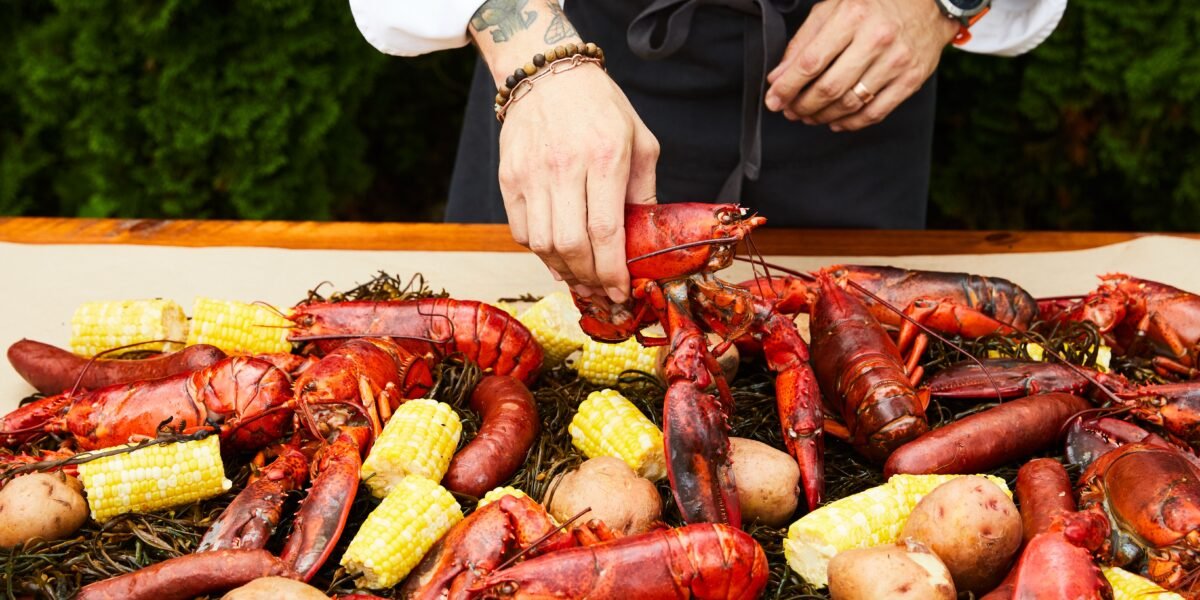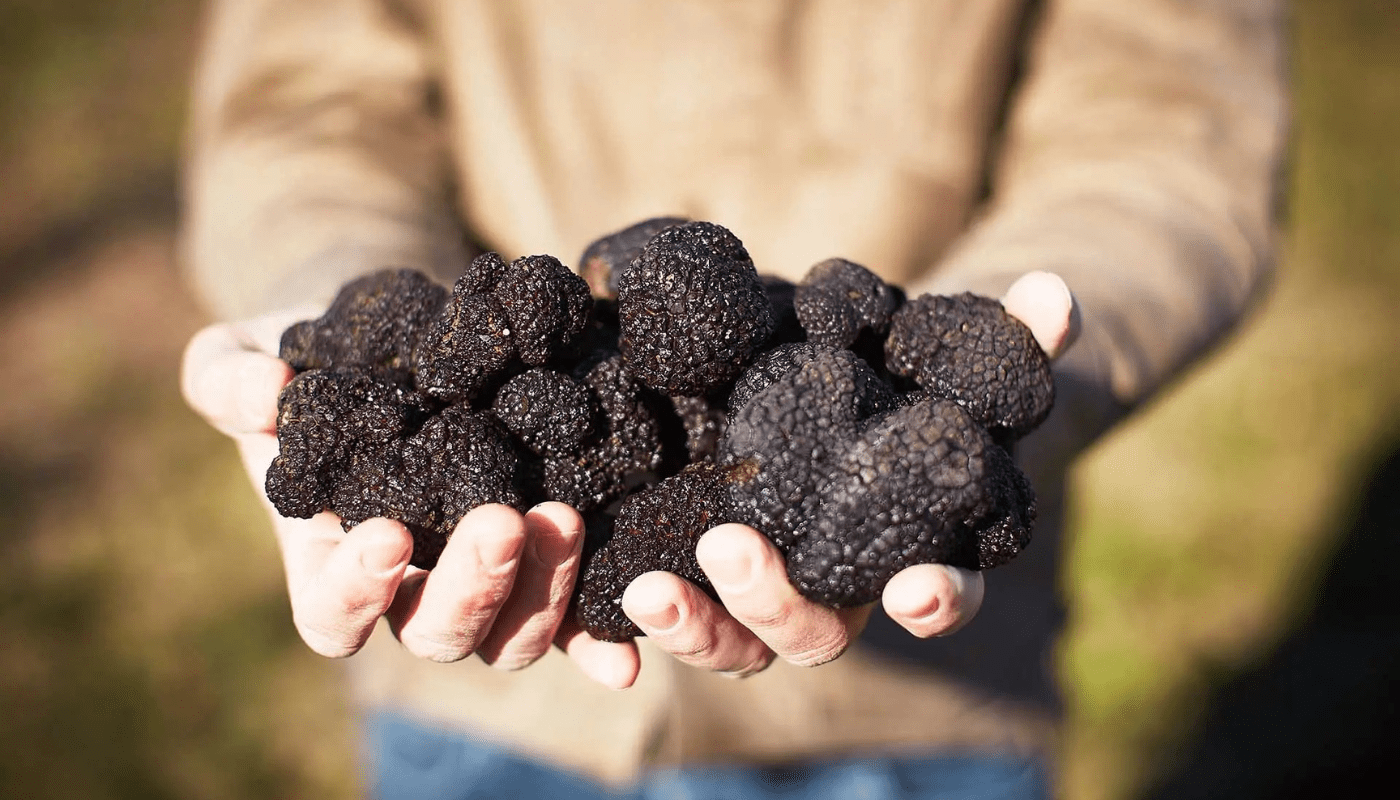
Fall Harvest Traditions Rooted in Place
Fall is a season of transformation, where every change is unique to every place. Across the country, towns and regions mark the season in their own distinctive ways: a lobster bake on the Maine coast, an oyster roast on Southern shores, Hatch Chiles roasting in New Mexico’s street markets, cattle driven home by ranch hands in Montana’s high country. These aren’t just events—they’re rituals, rooted in place and tradition, passed down through generations, that connect us all deeper to the land. Below, we’re excited to share the fall traditions across the country we return to year after year—time-honored rituals that define and celebrate a sense of place. It’s experiences like these that make our tailor-made journeys unforgettable.
Wood-Fired Oyster Roasts in the Lowcountry

Oyster Roasts at Greyfield Inn
Oyster roasts are a cherished Lowcountry tradition that tie together Southern hospitality, a well-loved tradition and the changing of the seasons. Held from late fall through winter—when oysters are at their sweetest —these gatherings transform tidal harvests into communal feasts, often served steaming on metal tables under moss-draped oaks beside coastal marshes.
What makes oyster roasts in the Lowcountry special isn’t just the food—it’s the ritual: oysters are roasted over an open fire, shoveled onto tables, and shucked open with a knife and a cold drink in hand. Everyone eats standing up, shoulder-to-shoulder, making it as much about storytelling and community as about the meal itself. In places like Charleston, Beaufort, and the Sea Islands, the oyster roast is more than a meal—it’s a celebration of season, place, the signing off of summer and a gratefulness for the bounty of the tide.
Sample Journey this experience pairs well with: The Best of New Orleans & Cajun Country
Truffle Hunting in Northern California

Truffle hunting in Sonoma, California
Though truffles are most famously rooted in the forests of France and Italy, Sonoma County has quietly become a formidable new purveyor of cultivated black truffles. Over the past two decades, a small cohort of pioneering researchers and farmers have been experimenting with inoculated oak and hazelnut trees. After years of patient tending (truffles can take up to a decade to mature), the region began yielding its first harvests in the 2010s. In typical California fashion, what started as an underdog agricultural experiment has quickly positioned Sonoma as a leader in this culinary space. Today, Sonoma’s Périgord black truffle is valued between $800 and $1,500 per pound.
As fall rituals go, few are as tied to place. It’s a distinctly Californian tradition—one that captures the essence of fall by honoring the land, the harvest, and the ingenuity that makes it all possible. Sonoma’s truffle hunts are not merely culinary diversions; they’re quiet celebrations of a seasonal landscape reimagined. And when the day’s work is done, there is the table: a locally-sourced meal, a glass of California Chardonnay, and the unmistakable scent of truffle.
More NorCall Inspiration: Wild, Local Food Rules NorCal’s Culinary Scene
Lobster Bakes Along The New England Coast

The timeliness tradition of lobster bakes in Maine
Thousands of years ago, on early fall evenings along the New England coast, Indigenous communities gathered to prepare what we now call a lobster bake: layers of shellfish, corn, and potatoes steamed over hot stones and seaweed, right on the beach. This wasn’t just a meal—it was a yearly ritual, tied to the changing seasons of the land and sea. That same tradition lives on today, passed down through generations and still practiced along these very shores.
Though lobster season begins in June, it’s in autumn—as the Atlantic cools—that the lobsters are at their peak: sweeter, firmer, and often considered the finest of the year. For locals, the lobster bake remains a sacred tradition, a celebration of place and season. For travelers, to take part in one is to experience something deeply rooted—a meal shaped by centuries of coastal life, cooked in the open air, scented with woodsmoke and salt. To join a lobster bake in Maine during this time is more than a meal; it’s stepping into a living tradition, unique to this time, this coast, and this culture.
More Coastal Culinary Inspiration: Chasing North America’s Tide-To-Table Movement
Hatch Chile Harvest Season in New Mexico

Harvesting the smokey-sweet Hatch Chiles in New Mexico
If you’ve traveled through New Mexico from early August through late September, chances are you’ve smelled the deep, smoky-sweet, wood-fired scent of Hatch Chiles roasting over open flames, wafting through the streets. That scent signals an undeniable truth: fall has arrived. Although some people say Hatch Chiles grow outside of the state, New Mexicans fiercely argue that true Hatch Chiles come only from the Hatch Valley—nurtured by terroir unique to this singular place.
Hatch Chile season runs from early August through late September, when these red and green chiles appear everywhere: splashed across menus, hanging outside homes, and sold in markets. They’re known for their complex, intensely flavorful, smoky-sweet heat and roasted-earth aroma—the very scent that fills the air as chiles tumble in open-flame roasters. It evokes deep cultural pride, rooted in generations of culinary tradition. To experience Hatch Chile season in Santa Fe is to witness a fragrant, fiery celebration of New Mexican heritage—something you can only find in this time and place.
Sample Journey this experience pairs well with: Back To The Future In New Mexico
Fall Cattle Drives Across The American West

An autumn cattle drive at The Resort at Paws Up
Each fall, ranchers across the American West ride into the hills to bring cattle down from high mountain pastures in preparation for winter. This seasonal migration marks the end of summer grazing, as forage grows sparse and temperatures begin to drop. In Colorado, herds descend through golden aspen groves; in Wyoming, they cross sagebrush flats beneath snow-dusted peaks; and in Arizona, they leave the high desert plateaus ahead of the first freezing nights.
Though part of the yearly routine, these drives remain deeply rooted in tradition—shaped by the land and passed down through generations of ranching families. Today, during the fall season, whether you’re a novice or experienced rider, you can join seasoned ranch hands on these drives. Spend your day in the saddle, tracing trails through changing autumn foliage, and unwind by the campfire after helping move cattle home from the alpine pastures where they’ve spent the summer.
More American West Inspiration: Beyond Cowboy Core: Authentic Experiences in the American West
Wine Harvest Season in the Willamette Valley

Mt. Hood overlooking the Willamette Valley in Oregon
A place that stayed under the radar in the wine world for years, the Willamette Valley in Oregon is now stepping into the spotlight. Often called Napa’s little sister, it’s earning its place among the top wine regions in the world. This Pacific Northwest valley is home to over 700 wineries—many of them family-owned and built out of a movement of rebellious winemakers who left more formal operations behind, threw out the rulebook and made wine on their own terms.
The views of the valley are unmatched: Mount Hood watching over a landscape stitched together by rolling vineyards, sprawling pastures, and towering evergreens. In the fall, the valley turns a deep golden-red as the vines change with the cooling temperatures—marking the start of harvest. Winemakers and their crews spend long days picking grapes, most destined for Oregon’s now-famous Pinot Noirs. The atmosphere is less formal and more playful, where pretentiousness is left at the door—true to the valley’s maverick winemaking roots that began in the 1980s. Travelers can get an up-close-and-personal experience during this time, where you’ll find a host of tastings, gatherings and winemaker dinners, and it’s not uncommon to find the winemaker themselves sitting next to you.
More Pacific Northwest Inspiration: Hidden Terroir | Exploring America’s Underrated Wine Regions
—
Curious about planning journey for this fall? Talk with one of our Destination Specialists to learn more.
